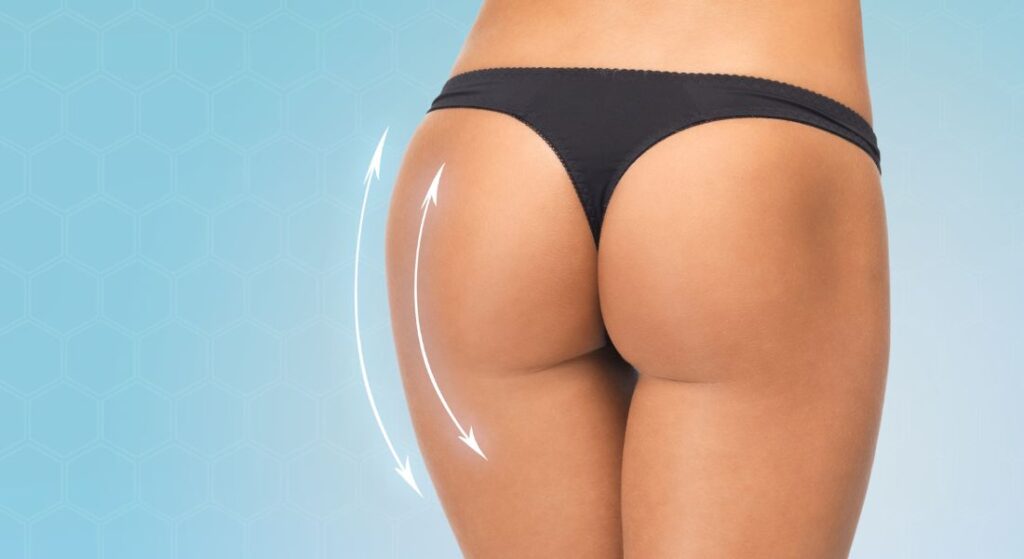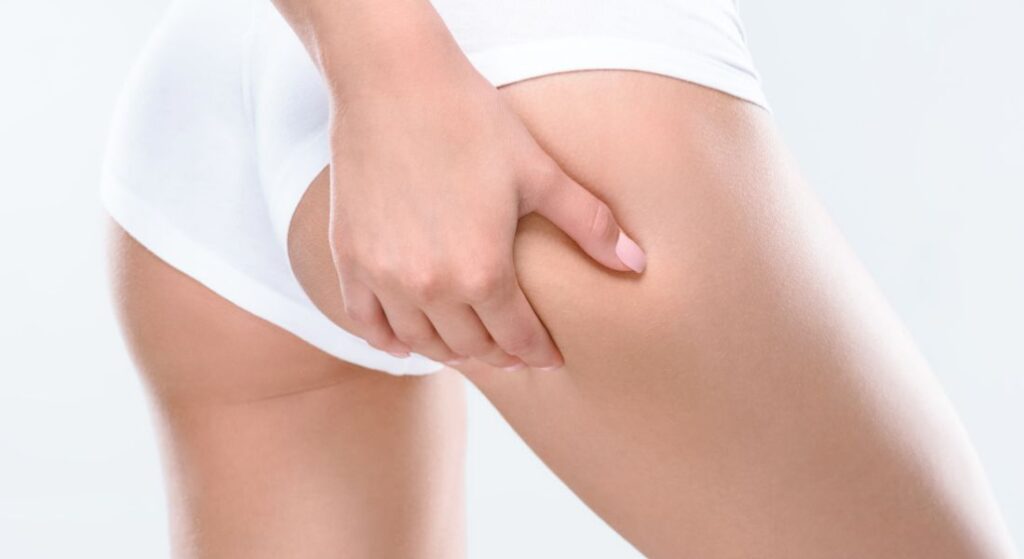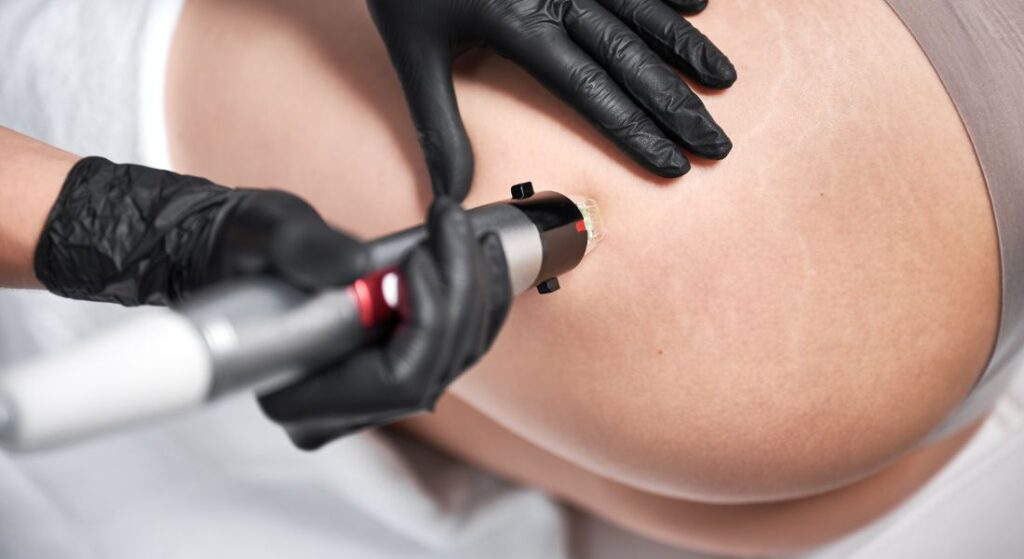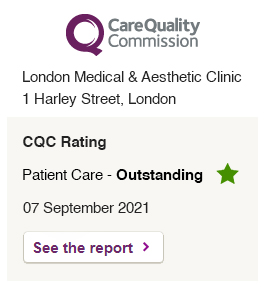
Cellulite is a common concern for many people, affecting the appearance of thighs, buttocks, and other areas. Cellulaze treatment is a minimally invasive procedure designed to reduce the appearance of cellulite by targeting the fibrous bands, fat cells, and skin thickness that contribute to dimpling.
One of the most frequent questions patients ask is: “How long does Cellulaze last?” Understanding the longevity of results, factors influencing them, and the role of maintenance can help you plan your treatment and manage expectations effectively.
In this guide, I’ll explain the typical duration of Cellulaze results, what can affect how long they last, and strategies to maintain smooth, rejuvenated skin over time.
What is Cellulaze?
Cellulaze is a laser-assisted treatment designed to tackle cellulite from beneath your skin, not just on the surface. If you’ve been frustrated with creams or massage techniques that only make a temporary difference, this could be a game-changer for you.
Here’s how it works:
Targets fibrous bands under your skin: loosening the cords that cause dimpling and smoothing your skin’s surface.”
Melts stubborn fat cells: The procedure gently liquefies fat pockets that contribute to that uneven texture, giving your skin a more even look.
Stimulates collagen production: Stimulates collagen production, which firms your skin and improves elasticity for smoother, long-lasting results.
The combination of these effects means you’re not just masking cellulite you’re addressing the structural causes behind it. This often results in visibly smoother, firmer skin that lasts longer than what topical creams or massage can provide.
With Cellulaze, you’re treating the problem at its source, so you can finally feel confident in your skin.
How Long Do Cellulaze Results Typically Last?

You might be wondering how long you can expect your smoother, firmer skin to last after Cellulaze. The good news is that results are often long-lasting, usually keeping your skin looking improved for 12–36 months, though it can vary depending on your lifestyle, genetics, and skin type.
Here’s what you can expect:
– Immediate effects: Right after the procedure, you might notice some improvement. This happens because the treatment disrupts fat and smooths the skin surface.
– Gradual improvement: The full benefits take a few months to appear usually around 3–6 months. During this time, your body continues to produce collagen, which strengthens and firms your skin.
– Durability: With proper care like staying active, maintaining a healthy weight, and looking after your skin the results can last for several years. Compared to creams or massage techniques, Cellulaze offers a more lasting solution because it addresses the root causes of cellulite, not just the surface appearance.
In short, while you’ll see some immediate changes, the best results develop gradually and can give you smooth, firmer skin you can enjoy for years.
Factors That Affect How Long Cellulaze Lasts
The results you see from Cellulaze can vary from person to person. Understanding the factors that influence longevity can help you set realistic expectations and get the most out of your treatment.
Age and Skin Elasticity
Your skin naturally changes as you age. If you’re younger and your skin has good elasticity, you’re likely to enjoy longer-lasting results. Your skin can bounce back more easily and maintain a smoother appearance. As you get older, however, collagen production slows down, and some dimpling may gradually return. That doesn’t mean the treatment won’t help it just means the timeline for maintaining results may be shorter.
Lifestyle and Weight Management
How you live your daily life has a big impact on your results. Maintaining a stable weight is crucial because significant fluctuations can affect fat distribution under your skin and potentially reduce the effectiveness of Cellulaze. Regular exercise is another important factor it keeps your muscles toned, supports healthy skin, and helps the improvements last longer. Even simple activities like walking, swimming, or yoga can make a noticeable difference.
Genetics
You can thank (or blame) your genes for some of your cellulite patterns. Genetics influence both the development and recurrence of cellulite. Some people are more prone to it no matter what they do. While Cellulaze addresses the structural causes, being genetically predisposed means you may need occasional touch-ups to maintain your results over the long term.
Number and Size of Areas Treated
If you’re treating multiple areas or larger sections of skin, results may vary slightly between different spots. That’s why your dermatologist will carefully plan the treatment to ensure even, natural-looking improvement across all areas. Proper planning can help you get smooth results that complement your body’s natural contours.
Follow-Up and Maintenance
Your care doesn’t end once the procedure is over. Regular follow-up appointments let your dermatologist monitor your healing and address minor irregularities before they become noticeable. Sometimes, occasional touch-ups are recommended to refresh your results. Think of it as giving your skin a little boost to keep it looking its best for years to come.
By paying attention to these factors your age, lifestyle, genetics, and proper follow-up you can maximise how long your Cellulaze results last and enjoy smoother, firmer skin for the long haul.
What to Expect After Cellulaze Treatment
It’s normal to wonder what your recovery will look like after Cellulaze, so here’s what you can expect. Keep in mind that everyone’s experience is a little different, but most people notice similar patterns:
Mild bruising and swelling: You might see some bruising or swelling around the treated areas. This usually settles within a few days, and it’s a normal part of your body’s healing process.
Temporary tenderness: The areas that were treated may feel a bit tender for a short period. You can usually manage this with gentle care and any pain relief recommended by your dermatologist.
Visible improvement: You may notice some immediate smoothing right after the procedure, but the best results take time. Over the next 3–6 months, your body continues to produce collagen, and your skin gradually becomes firmer and more even.
Your dermatologist will give you detailed aftercare instructions to make sure your skin heals properly and you get the most from your treatment. This might include:
– Guidelines on which activities to avoid and for how long
– Recommendations for wearing compression garments
– Advice on skincare products and routines to support recovery
By following these steps, you help your body recover smoothly and set yourself up to enjoy the full benefits of Cellulaze.
Tips to Maintain Your Cellulaze Results

Once you’ve invested in Cellulaze, there are several ways you can help your results last as long as possible. A few simple lifestyle choices and habits can make a big difference:
Maintain a Healthy Weight
Keeping your weight stable is key. When your weight fluctuates, fat can redistribute under your skin, which may create new dimpling. By staying consistent, you help preserve the smoother look you’ve achieved.
Exercise Regularly
Regular exercise does more than keep you fit it helps your skin stay firm and toned. Strength training builds muscle under your skin, while cardio promotes healthy circulation, both of which support long-lasting smoothness. Even daily walks or light workouts can make a difference.
Eat a Skin-Friendly Diet
What you eat affects your skin’s health. Focus on a diet rich in antioxidants, lean proteins, and plenty of water. These nutrients help support collagen production and keep your skin looking youthful and resilient.
Invest in Professional Skincare
Using dermatologist-recommended products, such as moisturisers or retinoids, can help maintain your skin’s elasticity and overall appearance. Taking care of your skin daily reinforces the improvements you’ve gained from Cellulaze.
Consider Follow-Up Treatments
Some people choose occasional touch-ups every 1–2 years to maintain optimal results or address new areas of concern. These minor treatments can help you enjoy long-lasting smoothness and confidence in your skin.
By following these strategies, you give your Cellulaze results the best chance to last and continue enjoying firmer, smoother skin for years to come.
How Cellulaze Differs from Other Cellulite Treatments
If you’ve tried creams, massage, or other non-invasive treatments, you might have noticed that results are often temporary. What makes Cellulaze different is that it tackles cellulite at its source, not just on the surface.
Here’s how it works:
Targets fibrous bands: Cellulaze loosens the tough cords under your skin that pull it down and create those dimples.
Reduces fat pockets: It gently melts the localized fat deposits that contribute to uneven contours, helping your skin look smoother.
Stimulates collagen production: By encouraging your body to make more collagen, Cellulaze strengthens your skin and improves elasticity, giving you firmer, long-lasting results.
Because it addresses the structural causes of cellulite rather than just masking them, Cellulaze tends to provide longer-lasting and more noticeable improvements than creams, massage, or other non-invasive approaches.
Who is a Good Candidate for Cellulaze?
You might be wondering if Cellulaze is right for you. In general, the best candidates are people who:
– Have moderate to severe cellulite: Cellulaze works well for noticeable dimpling that hasn’t responded to creams or other non-invasive treatments.
– Are in good overall health: Being healthy helps your body heal properly and get the most from the treatment.
– Have relatively elastic skin: Skin that still has some natural firmness responds better and shows longer-lasting results.
– Have no major medical conditions: Certain health issues could interfere with healing, so it’s important to be medically cleared.
The best way to know for sure is to consult a qualified dermatologist. They can assess your skin, discuss your goals, and create a personalised treatment plan so you get the results you’re hoping for.
Recovery Timeline
Understanding what happens after your Cellulaze treatment can help you feel more prepared and confident. Everyone heals differently, but here’s a detailed guide of what you can expect at each stage:
Day 1–3: Immediate Post-Treatment
In the first few days, you may notice mild swelling, bruising, and tenderness in the areas that were treated. These are normal signs that your body is starting to heal. Your dermatologist will likely recommend wearing compression garments to support your skin and reduce swelling. During this time, you’ll want to take it easy and avoid intense activity until you feel comfortable and your dermatologist advises. Light walking is usually fine and can even help circulation.
Week 1–2: Early Healing
By the end of the first couple of weeks, swelling and bruising should begin to fade. You might still notice some redness or tenderness, but it should be manageable. Many patients feel comfortable resuming most of their normal daily activities, though it’s still best to avoid anything too demanding. Gentle movement and staying hydrated can help your skin recover more efficiently.
Month 1–3: Gradual Improvement
This is when you’ll start to see more noticeable changes. Your body is producing new collagen, which helps smooth out the dimples and firm up the skin. You may notice that the treated areas look more even, feel tighter, and appear healthier overall. Patience is key here results continue to improve gradually over these months as your skin adapts.
Month 3–6: Full Results
By three to six months, you should see the full benefits of your treatment. Your skin will appear smoother, firmer, and more toned, and the dimples that bothered you before are significantly reduced. With proper care including maintaining a healthy lifestyle, exercising, and following any touch-up recommendations these improvements can last for years. At this stage, many patients feel a boost in confidence because the results are visible and long-lasting.
Tips During Recovery:
1. Follow all aftercare instructions provided by your dermatologist.
2. Wear compression garments as advised to support healing.
3. Avoid excessive sun exposure and protect your skin.
4. Stay hydrated and maintain a healthy diet to support collagen production.
5. Be patient your body is continuing to heal and improve long after the procedure.
By understanding this timeline and following your dermatologist’s guidance, you give yourself the best chance to enjoy smooth, firm, and long-lasting results from Cellulaze.
Combining Cellulaze With Other Treatments

If you want to get the most out of your Cellulaze results, it can be combined with other complementary treatments. A multi-modal approach can help enhance and extend the benefits, giving you smoother, firmer skin with more defined contours.
Some options your dermatologist might suggest include:
– Liposuction: If you have stubborn fat pockets in addition to cellulite, combining Cellulaze with liposuction can help further contour and sculpt your body.
– Skin tightening procedures: Treatments like radiofrequency or laser therapy can improve skin elasticity and tone, working alongside Cellulaze to give a firmer appearance.
– Topical treatments: Using dermatologist-recommended creams or serums can boost skin hydration and quality, supporting your long-term results.
By pairing Cellulaze with these complementary treatments, you can maximize your improvements and enjoy smoother, more youthful-looking skin for longer. Your dermatologist can help create a personalised plan that’s right for you, depending on your goals and skin type.
Frequently Asked Questions About Cellulaze:
1. What is Cellulaze and how does it work?
Cellulaze is a minimally invasive laser treatment designed to target cellulite at its root rather than just on the surface. The procedure works by breaking down the fibrous bands that pull the skin downward, melting localized fat pockets, and stimulating collagen production. This combination smooths out dimples, tightens the skin, and improves overall texture over time.
2. Who is an ideal candidate for Cellulaze?
The best candidates are individuals with moderate to severe cellulite who are in good overall health and have relatively elastic skin. It is important that candidates do not have any medical conditions that could interfere with healing. Consulting with a qualified dermatologist ensures that your skin type and health status make you suitable for the procedure.
3. How long does the Cellulaze procedure take?
A Cellulaze session usually takes one to two hours, depending on how many areas you’re treating. Your dermatologist will plan the session carefully to ensure even results and minimal discomfort.
4. Does the procedure hurt?
Cellulaze is performed under local anesthesia, so you should not feel pain during the procedure. Some patients experience mild discomfort during recovery, such as tenderness or swelling, but this generally resolves within a few days to weeks. Pain management guidance is provided by your dermatologist.
5. When will I see results?
You may notice some immediate smoothing due to fat disruption, but the full effects of Cellulaze develop gradually. Over the next three to six months, your body continues to produce collagen, firming the skin and reducing dimples for a more natural, long-lasting improvement.
6. What is the recovery like after Cellulaze?
Recovery varies for each patient, but most people experience mild bruising, swelling, and tenderness in the treated areas. Compression garments are recommended for the first few days to support healing. Light activity such as walking is encouraged, while strenuous exercise or heavy lifting should be avoided initially.
7. Are there any risks or side effects?
Cellulaze is generally safe when performed by a qualified dermatologist, but some patients may experience temporary bruising, swelling, or tenderness. In rare cases, minor skin irregularities or pigmentation changes can occur. Following post-treatment instructions closely helps minimise these risks.
8. How long do the results last?
Results typically last between 12 and 36 months, depending on factors such as age, genetics, skin elasticity, and lifestyle choices. Maintaining a stable weight, exercising regularly, and following your dermatologist’s aftercare guidance can help ensure that your results remain long-lasting.
9. Can Cellulaze be combined with other treatments?
Yes, Cellulaze can be combined with complementary procedures such as liposuction for stubborn fat areas, radiofrequency or laser-based skin tightening treatments, and topical skincare therapies. A multi-modal approach can enhance results and provide firmer, smoother, and more youthful-looking skin.
10. How do I get started with Cellulaze?
The first step is to consult a qualified clinic to discuss your goals and assess your suitability for the procedure. You can contact the London Medical & Aesthetic Clinic to discuss your goals with Dr Ayham Al-Ayoubi, a leading expert in Cellulaze treatment. During this consultation, you will receive a personalised plan tailored to your needs, ensuring the best possible results.
Final Thoughts: How Long You Can Expect Cellulaze to Last
With proper care, lifestyle management, and follow-up, Cellulaze results can last 12–36 months or longer. The procedure offers long-term improvements that far surpass temporary creams or massage treatments.
Your results will depend on factors such as age, genetics, skin elasticity, and lifestyle choices. Maintaining a healthy weight, exercising regularly, and following your dermatologist’s post-care guidance will help prolong smooth, toned skin.
If you’re considering Cellulaze treatment, you can contact us at the London Medical & Aesthetic Clinic to discuss your goals with Dr Ayham Al-Ayoubi, a leading expert in achieving optimal results. Consulting with Dr Al-Ayoubi ensures you receive a personalised plan tailored to your needs, helping you enjoy long-lasting, smoother, and more youthful-looking skin.
References:
1. DiBernardo, B.E., 2016. A multicenter study for cellulite treatment using a 1440-nm pulsed laser. Journal of Cosmetic and Laser Therapy, 18(4), pp. 207–211. Available at: https://pmc.ncbi.nlm.nih.gov/articles/PMC5127477/
2. Sadick, N.S., 2018. Treatment for cellulite. Journal of Clinical and Aesthetic Dermatology, 11(6), pp. 19–24. Available at: https://pmc.ncbi.nlm.nih.gov/articles/PMC6374708/
3. DiBernardo, B.E., Sasaki, G.H., Katz, B.E., Hunstad, J.P., Petti, C. and Burns, A.J., 2016. A multicenter study for cellulite treatment using a 1440-nm Nd:YAG wavelength laser with side-firing fiber. Aesthetic Surgery Journal, 36(3), pp.335–343. Available at: https://academic.oup.com/asj/article/36/3/335/2190482
4. Sadick, N.S., 2019. Treatment for cellulite: A review of current modalities. Journal of Cosmetic Dermatology, 18(6), pp.1501–1506. Available at: https://www.sciencedirect.com/science/article/pii/S2352647518300418
5. DiBernardo, B.E., 2011. Treatment of Cellulite Using a 1440-nm Pulsed Laser With Side-Firing Fiber. Aesthetic Surgery Journal, 31(3), pp.328–335. Available at: https://academic.oup.com/asj/article/31/3/328/2770604





